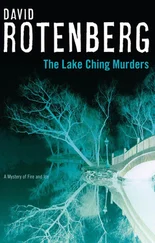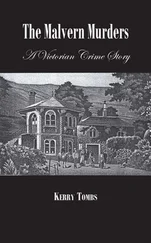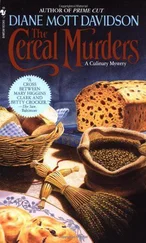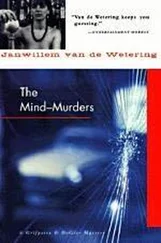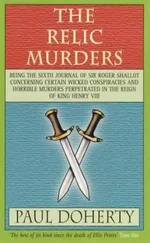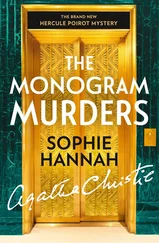David Rotenberg - The Shanghai Murders
Здесь есть возможность читать онлайн «David Rotenberg - The Shanghai Murders» весь текст электронной книги совершенно бесплатно (целиком полную версию без сокращений). В некоторых случаях можно слушать аудио, скачать через торрент в формате fb2 и присутствует краткое содержание. Год выпуска: 2011, Издательство: Schwartz Publishing Pty. Ltd, Жанр: Полицейский детектив, на английском языке. Описание произведения, (предисловие) а так же отзывы посетителей доступны на портале библиотеки ЛибКат.
- Название:The Shanghai Murders
- Автор:
- Издательство:Schwartz Publishing Pty. Ltd
- Жанр:
- Год:2011
- ISBN:нет данных
- Рейтинг книги:5 / 5. Голосов: 1
-
Избранное:Добавить в избранное
- Отзывы:
-
Ваша оценка:
- 100
- 1
- 2
- 3
- 4
- 5
The Shanghai Murders: краткое содержание, описание и аннотация
Предлагаем к чтению аннотацию, описание, краткое содержание или предисловие (зависит от того, что написал сам автор книги «The Shanghai Murders»). Если вы не нашли необходимую информацию о книге — напишите в комментариях, мы постараемся отыскать её.
The Shanghai Murders — читать онлайн бесплатно полную книгу (весь текст) целиком
Ниже представлен текст книги, разбитый по страницам. Система сохранения места последней прочитанной страницы, позволяет с удобством читать онлайн бесплатно книгу «The Shanghai Murders», без необходимости каждый раз заново искать на чём Вы остановились. Поставьте закладку, и сможете в любой момент перейти на страницу, на которой закончили чтение.
Интервал:
Закладка:
Then Geoffrey repeated Fu Tsong’s words, “We’re all here. Shakespeare wrote us all in the play. Which one are you?”
Time of day became the next discussion. Geoffrey postulated what he called the witching hour. That time when the Moslem crier, the muezzin, climbs the tower of the mosque and holds up a black thread and a white one. When he can see the difference between the two he calls the faithful to the first prayers of the day. It is the point at which Banquo returns to the castle with his son Fleance to meet his end. It is the moment of night’s end, in theory the victory of the light. But in Twelfth Night , the long night only leads to a longer day.
The actors began to work. A moment found, a moment lost, a line needing a better translation. Finally Geoffrey stops the group. The faces are flushed, alive. “Let’s try working this in vibrating primaries rather than in pure primaries. It’s not complicated, just hear me out for a moment. I have two kids, a boy eight and a girl six. They both love playgrounds-you know with swings and slides-they’d go nuts at the Children’s Palace on Yan’an. Well, every time we pass a playground my kids go into the pure right-handed primary of I SEE, I LOVE. And if I allow them to go into the playground the six-year-old stays in that pure primary, but the eight-year-old knows in his heart that he is too old to love something like this so much. So when he enters the park he changes from the pure right-handed primary of I SEE, I LOVE to the vibrating primary of I SEE, I LOVE, BUT I KNOW I SHOULDN’T. The six-year-old is a joy to watch in the playground in her pure primary state, but the eight-year-old is downright fascinating sitting squarely in the centre of his vibrating primary. Playing in pure primaries has a tendency to ride an actor’s age down creating that kiddy acting nonsense. To be childlike is not to be childish. To keep the work sophisticated the pure primary has to be mated with its opposite which makes the pendulum swing inside. It carves internal landscapes and hence you are compelling to watch without that hideous ’doing things.’ By the way, only when you’re in primaries is less more. When you’re in secondary less is only less. Clear?”
A few questions came back at Geoffrey, most having to do with the fear of playing emotions. In each case Geoffrey reiterated that he was not talking about playing emotions but being in emotional states. “You play your actions. You try to make your acting partner feel things that will spur them to do things. But to be compelling- to create density and interest in your work-you must play those actions and release the text’s images from a primary state-hopefully a vibrating primary.”
Geoffrey’s simple, elegant staging of the scene took shape over the next three hours. There were no breaks in Geoffrey Hyland rehearsals. Actors smoked when they were not needed, or drank tea from the omnipresent thermoses, but they never wandered off. This was not a place of idle chatter. It was an artist’s studio. They thought and contributed and went into themselves, trying to find their stops and ventages to make most eloquent music.
Only at the very end of the scene do any of the characters drink. Feste takes a sip and it pierces his heart. A cry of pain comes from him that is music itself and the scene ends with the sun rising over a stage of addicted lovers unable to sleep at night or be fully awake during the day.
Fong loved it. Unlike so much spoken theatre, it touched him deeply. Touched him the way that the Shanghanese Opera could. His grandmother had taken him when he was five to the theatre in the heart of the Old City. Shanghanese Opera is a form of classical Peking opera that varies only in interpretation, not genre, from the original. The Shanghanese version has a tendency to be shorter and more melodious. But it is still the singing, tumbling, acting, juggling, transcendent experience of the original.
The very first piece Fong saw took his heart completely. It was Journey to the West . The evening began with an oceanside leavetaking of a king and his beautiful daughter whom for political reasons he has to give in marriage to a prince of the western provinces. The scene, although formal, has cracks of tension in it where feeling is implied without being shown. Then a serving man is entrusted with the daughter’s safety and off the two go on the three-thousand-mile journey to the West. Their travels begin conventionally enough. The serving man walks as his beautiful mistress rides (indicated by the carrying of a four-tassled stick). She, naturally enough, treats him as a common serf but as the days pass and the adventures of crossing rivers, deserts and mountains, meeting dangerous enemies, dealing with cold, and sleeping in the rain accumulate, a new appreciation for the serving man begins to grow in her.
When finally he is hurt trying to help her safely cross a deep river, she insists that he ride the horse and she walk. After their four-hour stage journey, most of which is done without speech and often with just the two actors on stage, they finally reach the western court and the serving man must hand over his charge. He does and turns to walk back to the East.
The serving man is dressed plainly. He tumbles, dances, sings, fights with both sword and lance, and juggles the complicated war hammer. The princess is played with sleeves and headdress feathers, her lengthened sleeves providing an elongated image and the two long elegant feathers accentuating every head movement by tracing the pulse of the energy from base to tip. Often the feathers are pulled down and put into the mouth creating various configurations. She wears raised shoes, is dressed in red and her face is painted mask white. For many years, she was easily the most erotic thing that entered Fong’s life.
When he first met Fu Tsong, he often felt like the serving man in the Journey to the West whose job it was to deliver the princess to some great man’s bed. It was not until years after they were married that he confessed to her his fascination with traditional Chinese “sung” theatre. He thought she would find it ludicrous coming as she did from the new “spoken word” theatre. But she didn’t. In fact she openly acknowledged her great debt to her Peking opera training and said that in the hands of the great actors the opera roles were as real as anything done anywhere. That what the classic form did was find the essence of emotion and then over hundreds of years refine the emanation of that emotion in the body. In the hands of normal classical opera actors this just became a hollow shell, but with a master or mistress of the art the shell held a glowing truth.
So it was with delight that, years later, Fong wangled two tickets for a famous actress’s performance of Journey to the West at Shanghai’s newly renovated Yi Fu Stage. As the evening went on Fong found himself once more lost in the story of the serving man and the princess. Amidst the noise of the audience and the comings and goings, there was real communication. Fong felt as if the actress were reaching out-putting her cool hand directly on his chest. Kneading and pressing toward his heart. Putting his nipple in her mouth and sucking firm and slow. He felt that he saw every quiver of her hand and flash of her eye. He was lost in the embrace of a woman on a stage with white makeup and four-foot feathers on her head.
As the serving man gave her over to her new husband Fu Tsong’s hand crept into his. “Special, isn’t it?” But he couldn’t respond, only nod and hope she couldn’t sense the tears welling up in him.
After the show, Fu Tsong excused herself and went backstage to say hello to the stage manager, who was an old friend. Theatre people had “old friends” that way and although Fong understood such things he always felt awkward in a world of people who were intimate but not close. He chose to wait in the lobby and gloried in the photographs of the actress, Su Shing, who played the princess.
Читать дальшеИнтервал:
Закладка:
Похожие книги на «The Shanghai Murders»
Представляем Вашему вниманию похожие книги на «The Shanghai Murders» списком для выбора. Мы отобрали схожую по названию и смыслу литературу в надежде предоставить читателям больше вариантов отыскать новые, интересные, ещё непрочитанные произведения.
Обсуждение, отзывы о книге «The Shanghai Murders» и просто собственные мнения читателей. Оставьте ваши комментарии, напишите, что Вы думаете о произведении, его смысле или главных героях. Укажите что конкретно понравилось, а что нет, и почему Вы так считаете.



